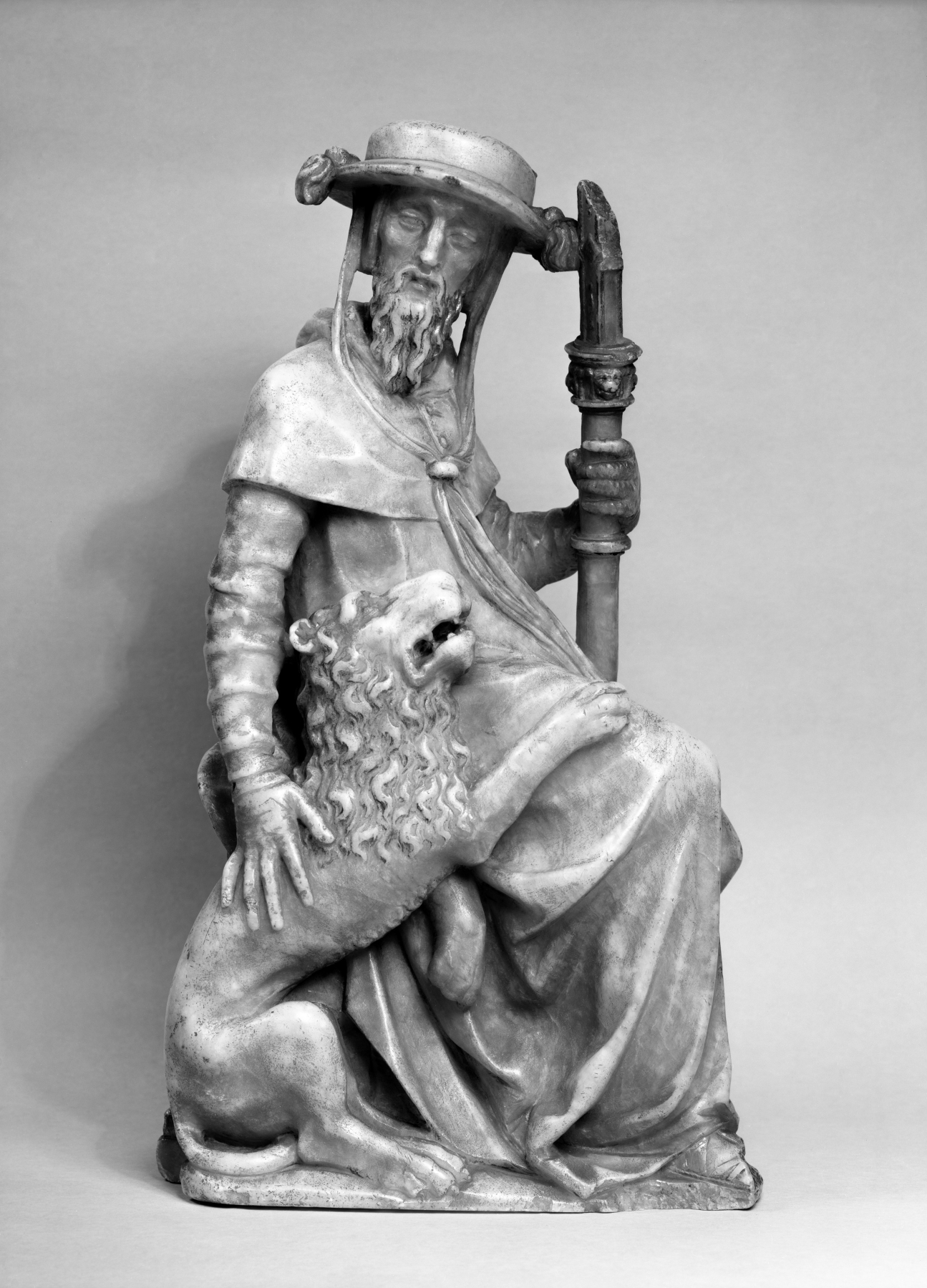Saint Jerome
(Renaissance Europe )
Jerome's great service to the Church was his translation of the Bible into Latin, which he completed at a monastery in Palestine. The sculptor could not depict the setting as could a painter, but he could help viewers imagine it themselves by including a colorful detail--the lion that, according to the well-known story, was miraculously tamed by the saint and followed him around like a pet dog.
Alabaster is excellent for statuettes because it is easier to carve than marble and allows for fine detail. This figure is from a set of the Four Fathers of the Church (Saints Jerome, Augustine, Ambrose, and Gregory the Great) installed on an altar or a tomb. The style of the carving suggests it might be the work of the Spanish sculptor Bartolomé Ordóñez; it combines the angular drapery typical of the late Gothic period with a more complex sense of volume, revealing familiarity with contemporary Italian sculpture.
Provenance
Provenance (from the French provenir, 'to come from/forth') is the chronology of the ownership, custody, or location of a historical object. Learn more about provenance at the Walters.
Count Pourtalès, Silesia [date and mode of acquisition unknown]; Albert Ullmann, Frankfort, Germany [date and mode of acquisition unknown]; Private collection, England; Paul Drey Gallery, New York [date and mode of acquisition unknown]; Walters Art Museum, March 12, 1958, by purchase.
Exhibitions
| 1960 | Gothic to Baroque. Allentown Museum of Art, Allentown. |
| 1949 | The Gothic North. Columbus Gallery of Fine Arts, Columbus. |
Geographies
Spain, Barcelona (Place of Origin)
Measurements
H: 14 1/4 in. (36.2 cm)
Credit Line
Museum purchase with funds provided by the S. & A.P. Fund, 1958
Location in Museum
Accession Number
In libraries, galleries, museums, and archives, an accession number is a unique identifier assigned to each object in the collection.
In libraries, galleries, museums, and archives, an accession number is a unique identifier assigned to each object in the collection.
27.555


